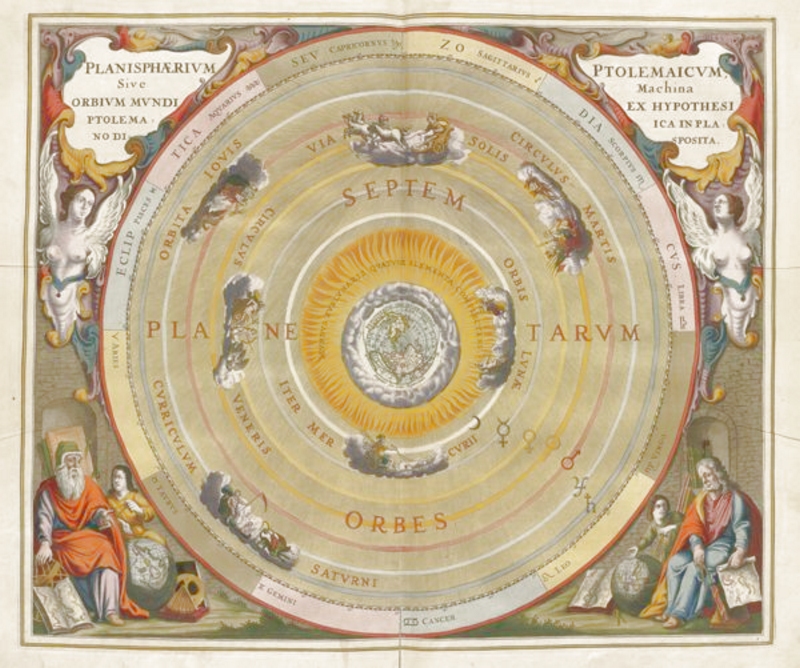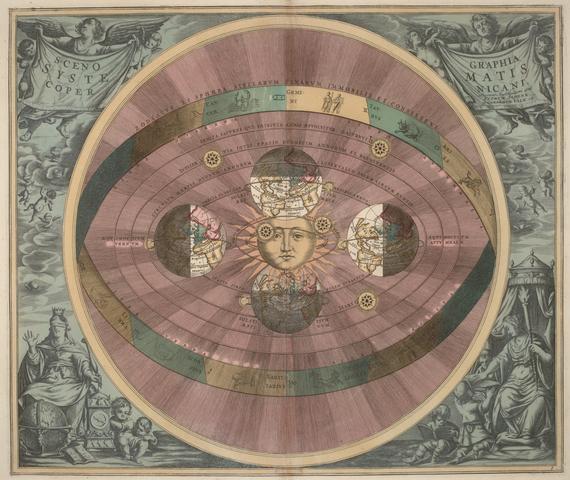The Copernican Turn in Aesthetics:
How Kant’s Notion of the Mathematical Sublime
Re-Aestheticizes the Universe
By Thiti Owlarn
Introduction
The invention of the telescope and the overthrowing of the Ptolemaic model resulted in a drastic change in the way man conceived of the universe. Before the 16th century, the universe was thought to be self-enclosed and geometrically well-defined, with the moon, the sun, and the planets orbiting around Earth in circular orbits with epicycles and the distant stars static in its place on the celestial sphere. By the time Kant began work on the Third Critique, however, the universe was already understood to be something altogether different. Copernicus proposed a heliocentric model of the solar system in 1543, which signaled the eventual downfall of the Ptolemaic system. Tycho Brahe’s discovery of the 1572 supernova showed the stars in the celestial sphere to be less static than previously thought. Kepler’s first two laws of planetary motion, published in 1609, changed the way the orbits of the planets were understood: they were revealed to be elliptical, which was not thought to be as geometrically pleasing as the circular orbits of old. Galileo’s use of the telescope from 1609 to 1642 resulted in the discovery of countless new stars and celestial objects, which showed the universe to be much greater in size than previously conceived. By the time of Kant, the universe had already come to be understood by scientists as something inconceivably expansive, without any discernible shape to define its geometric form.
This complete change in the way the universe was conceived posed a peculiar problem for 18th century aestheticists. Traditionally, the universe was understood to be a model of aesthetic perfection because of its geometrically balanced and well-defined form. However, now that the universe was seen as something boundless and shapeless, it became difficult to explain how it could still be regarded as an object of aesthetic beauty. Pre-Kantian aesthetics, which had wedded the notion of aesthetic pleasure with the idea of formal perfection, could not find an adequate solution to this problem. It was not until Kant introduced the notion of the mathematical sublime in the Third Critique that it became possible to once again regard the universe as a source of aesthetic pleasure.
The goal of this paper is to explain how Kant’s notion of the mathematical sublime helps bring about this re-aestheticization of the universe. However, before we can come to understand Kant’s notion of the mathematical sublime, it is important that we first grasp Kant’s notion of a merely reflecting judgment, Kant’s notion of the beautiful, and Kant’s notion of the sublime in general. As such, I will divide my paper into five parts. The first part deals with Kant’s notion of a merely reflecting judgment and explains how the mere form of purposiveness that underlies every act of cognition makes this form of judgment possible. The second part deals with Kant’s notion of the beautiful and explains how it stems from the free play of the imagination and understanding in a merely reflecting judgment. The third part deals with Kant’s notion of the sublime and explains how it is the result of a mere reflecting judgment that fails to cognize a form in the object, but nevertheless succeeds in uniting experience under the idea of totality. The fourth part deals with Kant’s notion of the mathematical sublime and explains how the intuition of something boundless and without form reveals us the limits of sensible cognition and lead us to appreciate the power of reason, which can make apprehensible to the mind that which cannot be comprehended by the intuition. The fifth and final part connects Kant’s notion of the mathematical sublime with a reflection on the universe, explaining how a boundless and formless universe, which cannot be aesthetically comprehended by the mind, could nevertheless be the source of aesthetic pleasure through the power of reason. I will then conclude with a remark on how Kant’s theory of aesthetics leads us to view the universe as something that is neither harmonious, nor beautiful, nor formally comprehensible, and yet, because it reveals to us how the power of our reason transcends the limits of our imagination, is something that we ought to regard with a sense of respect, awe, and wonder.




